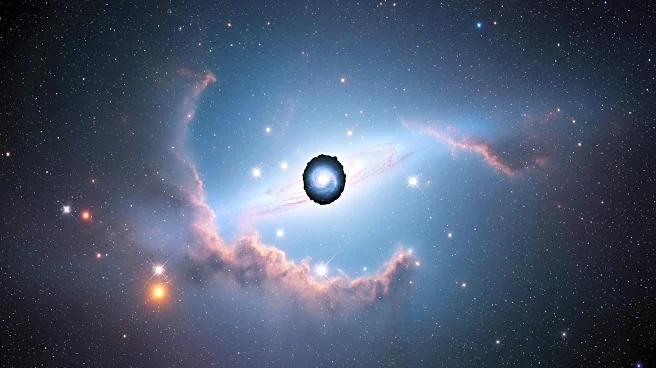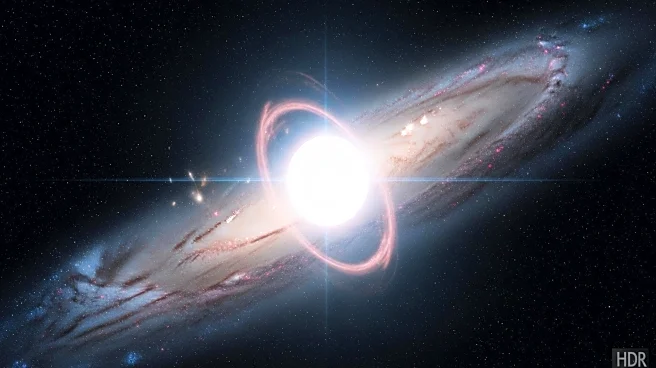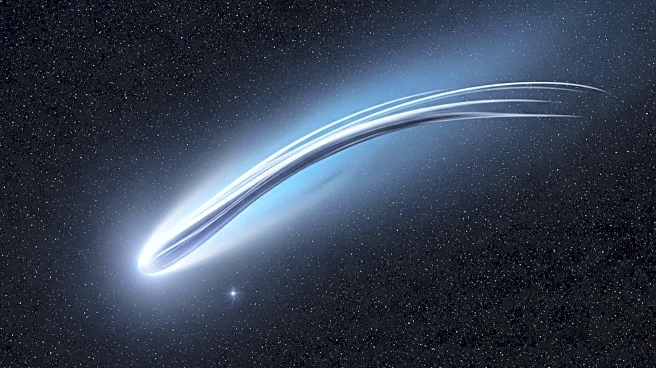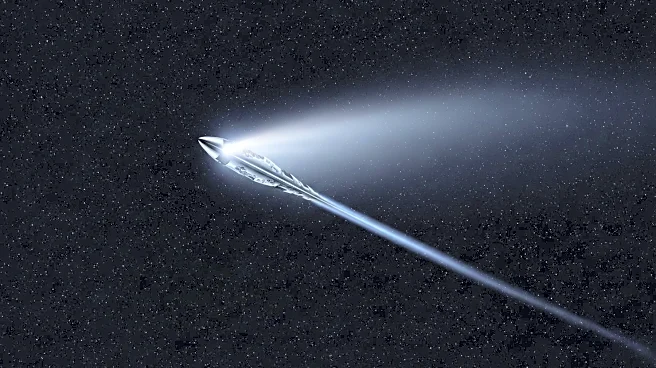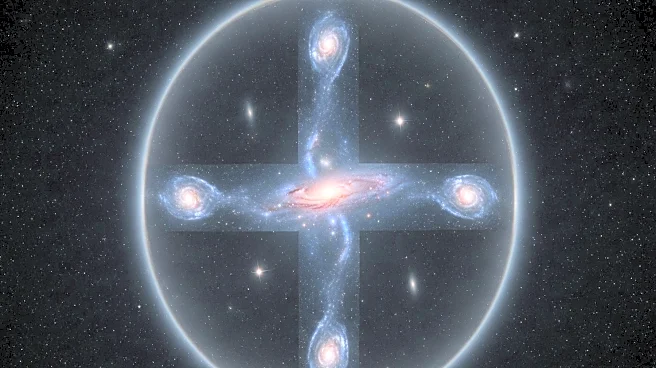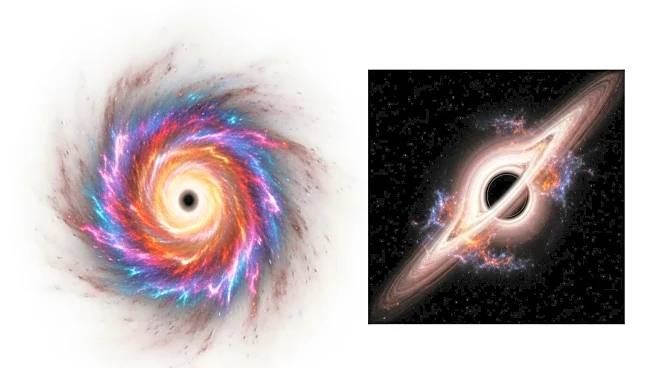What is the story about?
What's Happening?
Astronomers have identified a rare 'runaway' dwarf galaxy, named SDSS J011754.86+095819.0 or dE01+09, which appears to have been ejected from its original galactic group billions of years ago. This discovery was made using a machine learning model trained on 5,000 early-type dwarf galaxies, scanning data from the Sloan Digital Sky Survey and the DESI Legacy Imaging Survey. The galaxy is isolated, lying more than 3.9 million light-years from its nearest likely host, the NGC 524 group in the constellation Pisces. Spectroscopic analysis indicates that dE01+09 stopped forming stars around 8.3 billion years ago, suggesting it was quenched within the group before being expelled. The galaxy's radial velocity matches that of the NGC 524 group, reinforcing the idea that it once belonged there.
Why It's Important?
The discovery of dE01+09 provides rare observational evidence that some isolated galaxies may be survivors of violent ejections from dense galactic groups. This finding challenges the assumption that a galaxy's current location reflects its entire history. Understanding such ejections can offer insights into the life cycles of the universe's smallest galaxies and the dynamics within galactic groups. The study of runaway dwarf galaxies like dE01+09 could help astronomers better understand the frequency and conditions under which such ejections occur, potentially reshaping theories about galaxy formation and evolution.
What's Next?
Paudel and his team are searching for more runaway dwarf galaxies to understand how often such ejections occur. Future observations may reveal visible signs of dE01+09's connection to the NGC 524 group, such as faint tidal tails. These findings could shed new light on the complex interactions and life cycles of galaxies, particularly in smaller group environments where such dramatic ejections are rarely observed.
AI Generated Content
Do you find this article useful?
